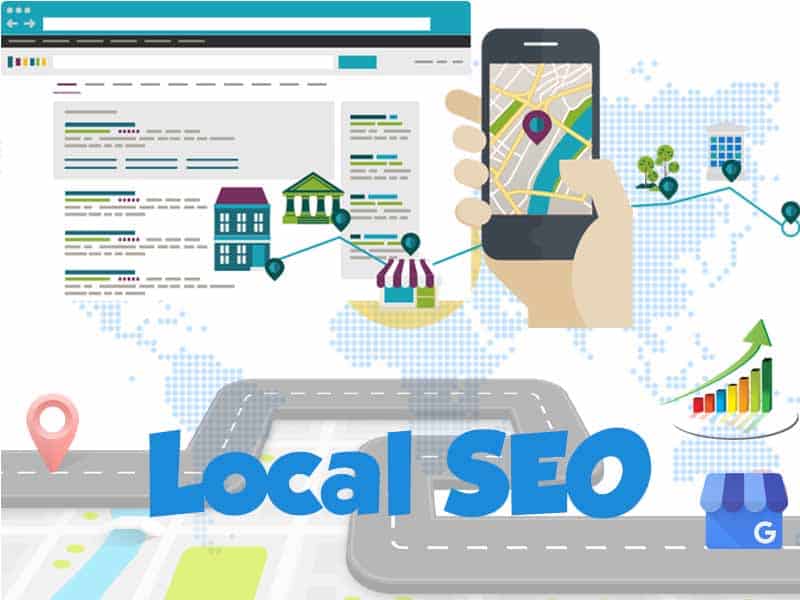Local SEO: The Ultimate Strategy Guide for Local Businesses
With the ease of online access, local SEO has shifted from being optional to essential. Whether you’re a small business owner or managing a multi-location enterprise, optimizing for local search can unlock new opportunities to connect with nearby customers who are ready to take action.
This detailed guide delves into the intricacies of local SEO, offering a step-by-step roadmap to boost your visibility, outrank competitors, and dominate local markets.
Understanding the Basics: What is Local SEO?
Local SEO means fine-tuning your online presence to draw in nearby customers looking for what you offer. It involves strategies that target location-based queries, such as:
- “Best Italian restaurant near me”
- “Electricians in Chicago”
- “24/7 pharmacy open now in Sydney”
Search engines prioritize local results when they detect user intent for nearby services, making it critical for businesses to tailor their strategies to these queries.
Benefits of Local SEO
- Increased Visibility: Appear in local map packs and on top of local SERPs.
- Higher Conversion Rates: Local searches often have a higher purchase intent.
- Cost-Effective Marketing: Attracting relevant traffic from local users minimizes wasted ad spend.
- Build Community Trust: A strong local presence builds credibility with your audience.
Core Elements for Local SEO
1. Google Business Profile (GBP) Optimization
Your GBP is central to your local SEO. Implement these steps to boost its impact:
- Fill out every detail accurately, including business name, address, phone number (NAP), and website.
- Add high-resolution images showcasing your products, team, or location.
- Use primary and secondary categories that reflect your services (e.g., “Bakery” and “Coffee Shop”).
- Post updates, promotions, or announcements regularly.
- Answer customer questions directly on your profile.
Pro Tip: Use GBP’s built-in analytics to monitor how customers interact with your profile and identify opportunities for improvement.
2. Local Keyword Research
Identifying and targeting the right keywords is essential. Use tools like Google Keyword Planner, SEMrush, or Ahrefs to uncover high-volume, low-competition terms. Focus on:
- Geo-specific keywords: like “plumbers in Dallas” or “dentists near Central Park”.
- Service + location combinations: “Car repair in Houston.”
- Conversational phrases: These are essential for voice search optimization.
Incorporate these keywords into your:
- Website metadata (title tags, meta descriptions).
- Content headers (H1, H2).
- Blog posts and landing pages.
3. Local Content Marketing
High-quality, location-specific content can significantly enhance your SEO efforts. Consider creating:
- City Guides: A restaurant could write “Top 10 Places to Eat in Downtown Miami.”
- Localized FAQs: Answer questions specific to your audience, such as “How to maintain your HVAC system in Arizona’s heat.”
- Customer Stories: Showcase testimonials or case studies highlighting local clients.
Local content not only improves your SEO but also helps position your brand as a trusted resource in your community.
4. Consistent NAP Citations
Ensure that your NAP (Name, Address, Phone Number) remains consistent across every platform. This involves:
- Your website.
- Social media profiles.
- Listings on online directories, such as Yelp, Bing Places, and TripAdvisor.
- Local chamber of commerce or industry-specific directories.
Inconsistent NAP details can mislead search engines and lower your rankings. Use tools like BrightLocal to audit and manage your citations.
5. Online Reviews Management
Positive reviews can enhance your rankings and draw in more customers. Motivate your customers to provide reviews on:
- Google.
- Yelp.
- Industry-specific review platforms.
Respond to all reviews—good or bad— to show your customers you value their feedback. Here’s how:
- Thank customers for positive reviews.
- Address negative reviews constructively and offer resolutions.
6. Technical SEO for Local Websites
Technical SEO is vital for improving local search rankings. Ensure your website is:
- Mobile-friendly: Over 60% of local searches are performed on mobile devices.
- Fast-loading: Use tools like PageSpeed Insights to improve loading times.
- Secure: Implement SSL to ensure your site is HTTPS-compliant.
- Structured with Schema Markup: Use LocalBusiness schema to provide search engines with detailed information about your business.
7. Voice Search Optimization
Local queries are increasingly popular via voice search. Optimize your content for conversational phrases such as:
- “Where’s the nearest gas station?”
- “Best coffee shop open late in Chicago.”
Tips:
- Use natural language in your content.
- Focus on long-tail keywords.
- Answer questions concisely.
8. Hyper-Local Targeting with Geo-Fencing Ads
Take your local SEO efforts a step further by using geo-fencing technology. This allows you to target users within a specific radius of your business through ads on Google, social media, or apps.
9. Competitor Analysis
Analyze your competitors to understand their strategies:
- Their keyword rankings.
- Types of content they produce.
- The backlinks they’ve acquired.
Use tools like SpyFu or Moz to gain insights and refine your strategy.
10. Local SEO Analytics and Tracking
Assess the success of your strategies by employing:
- Google Analytics: Track local traffic and conversions.
- Google Search Console: Monitor search performance for local keywords.
- Rank Tracking Tools: Keep an eye on your position in local SERPs.
Expanding Beyond Local: Multi-Location SEO
For businesses with multiple locations, create a unique page for each branch. These pages should include:
- The address and contact details for that specific location.
- Unique content tailored to the area’s audience.
- Local testimonials or case studies.
This strategy ensures you rank individually for each location while maintaining a cohesive brand image.
Final Thoughts
Local SEO isn’t just about driving traffic; it’s about building trust and establishing your business as a local authority. By applying the strategies mentioned earlier, you can establish a strong online presence that draws in, engages, and keeps local customers.


